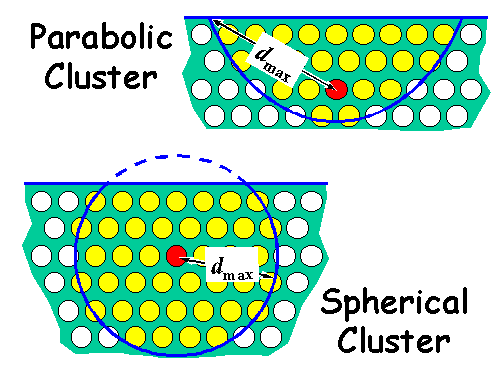- Parabolic. The cluster ends in a parabolic surface, which is axially symmetric with respect to the z axis(i.e., the surface normal) and has the reference point (x0,y0,z0) as its focus. The surface is defined as the points for which the sum of distances to the surface and to the reference point is a constant that equals dmax. It is convenient to choose the reference point at the position of the emitter, since in photoemission, when the photoelectron suffers an scattering event at an atom located on the cluster boundary, the electron path is at least the distance from the emitter to the cluster boundary plus the distance from the boundary to the surface.
- Spherical. The cluster ends in a sphere centered at the reference point (x0,y0,z0) and whose radius is dmax.
|


